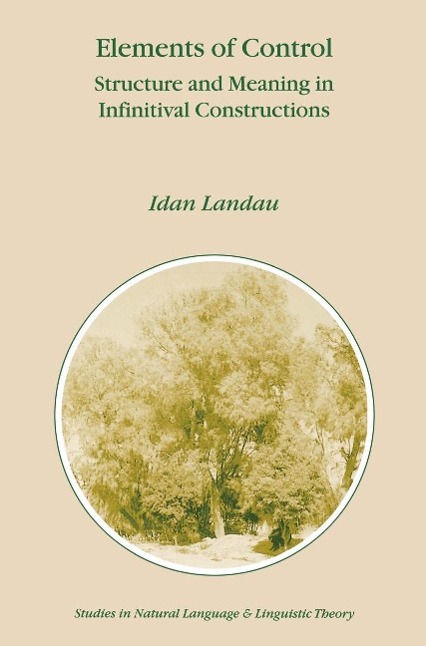
Sofort lieferbar (Download)
1. THE FUNDAMENTAL QUESTIONS OF CONTROL Imagine you are a child faced with the daunting task of acquiring the grammar of control in your language. You toddle around buoyantly (you should be past 3 by now), occasionally bumping into acoustic signals that miraculously map to "linguistic input". Some of them sound like this: (1) a. Robin, do you want _ to play with Kittie together? b. Come on, let me show you how _ to feed her. c. No Robin, Kittie doesn't like _ to be smacked. d. Robin, look what you've done! Bad boy! Time _ to go to bed. From your shelter under the kitchen table, you may draw the following conclusions: i) Mommy is very mad now; ii) Kittens make rotten toys; iii) My name must be Robin. Apart from the lesson in parental control, you also ought to learn something about grammatical control. In each of the sentences above, an element is missing (from the underlined position) that is nonetheless "filled-in" by your target grammar. This is what linguists term the "understood subject" of the infinitive. In order to be able to understand such sentences and produce similar ones yourself, you have to figure out the reference of the understood subject in every case. Thus, unless you are after some big trouble with Mommy, you had better conclude that the understood subject is Robin and Mommy in (la), Robin in (Ib), Kittie in (Ic) and everyone (especially Robin!) in (ld).
Inhaltsverzeichnis
1: Introduction. - 1 The Fundamental Questions Of Control. - 2 A Typology Of Control. - 3 EC And PC (Chapter 2). - 4 OC and NOC (Chapter 3). - 5 Control And Predication (Chapter 4). - 6 Implicit Control and Control Shift (Chapter 5). - 7 The Overall Picture and Open Issues. - 2: Exhaustive and Partial Control. - Introduction: Categories of Control. - 1 Some Immediate Corollaries of Partial Control. - 2 Basic Properties of Control. - 3 Distinguishing PC from EC. - 4 PC-Complements as a Natural Class: The Role of Tense. - 5 An Analysis. - 6 Varieties of EC: CP Complements and VP Complements. - 7 Some consequences and Problems. - 8 An Alternative Proposal: Martin (1996). - Summary. - 3: Obligatory and Non-Obligatory Control. - 1 Super-Equi: The Data. - 2 An Analysis. - 3 Configurational Consequences. - 4 Some Problems and Solutions. - 5 Deriving The Distribution of OC and NOC. - Summary. - 4: Control and Predication. - 1 Adjectives and Infinitival Complements: The Puzzle. - 2 Semantic Selection and Clause-Typing. - 3Argument-Modifier Asymmetries. - 4 Two Apparent Problems. - 5 A Crosslinguistic Correlation. - 6 Consequences for the Theory of Control. - Summary. - 5: Implicit Control and Control Shift. - 155. - 2 Control by Implicit Agents. - 3 Control Shift. - 4 The Status of the MDP. - Summary. - References.
Produktdetails
Erscheinungsdatum
06. Dezember 2012
Sprache
englisch
Seitenanzahl
215
Dateigröße
24,14 MB
Reihe
Studies in Natural Language and Linguistic Theory
Autor/Autorin
Idan Landau
Verlag/Hersteller
Kopierschutz
mit Wasserzeichen versehen
Produktart
EBOOK
Dateiformat
PDF
ISBN
9789401139434
Entdecken Sie mehr
Bewertungen
0 Bewertungen
Es wurden noch keine Bewertungen abgegeben. Schreiben Sie die erste Bewertung zu "Elements of Control" und helfen Sie damit anderen bei der Kaufentscheidung.









